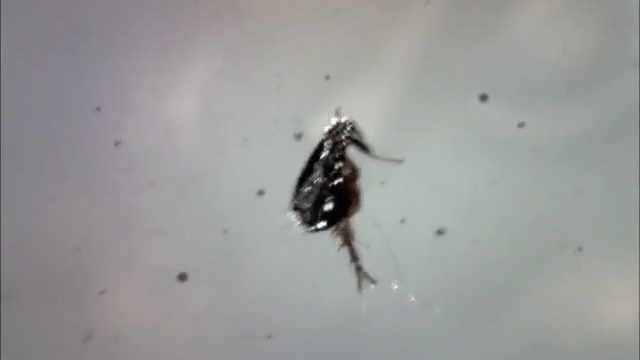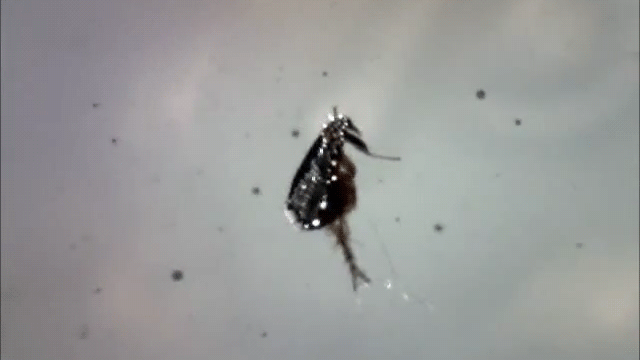Summary
Fleas can’t swim. They also won’t break the surface tension of water. Upon entering water, fleas flail around on the surface in an attempt to reach a physical object so they can jump or crawl out.
Details
Fleas don’t Swim or Sink
Fleas don’t swim. However, they also don’t sink. Instead, fleas will thrash about on the water’s surface in an attempt to crawl out Img 1. Fleas don’t break the surface tension of water because they’re tiny and coated with a water-repellent wax. They can survive for up to 7 days on the water’s surface.

Img 1 Cat flea flailing around on the surface of soapy water.
Forcing Fleas to Drown
Surfactants
Adding a surfactant to water reduces its surface tension. Household dish detergent (e.g. Dawn) is commonly used for this purpose. Fleas will sink in water containing a couple drops of dish soap. However, it still takes up 24 hours for submerged fleas to drown.
Vegetable Oil
Fleas will die more rapidly in vegetable oil. The oil is viscous and prevents swimming or flailing around. Vegetable oil has around half the surface tension of water. As a result, the fleas sink instead of remaining on the surface.
Preventing Fleas from Escaping Water
Fleas may escape if they’re able to reach the sides of the water container. Applying petroleum jelly to the container’s rim can help prevent fleas from crawling out. Fleas can also escape by mounting soap bubbles or suds, and then jumping out of the water. To prevent soap bubbles, JetDry can be used instead of dish soap. JetDry is a concentrated surfactant and doesn’t foam.





You must log in to post a comment. Log in now.